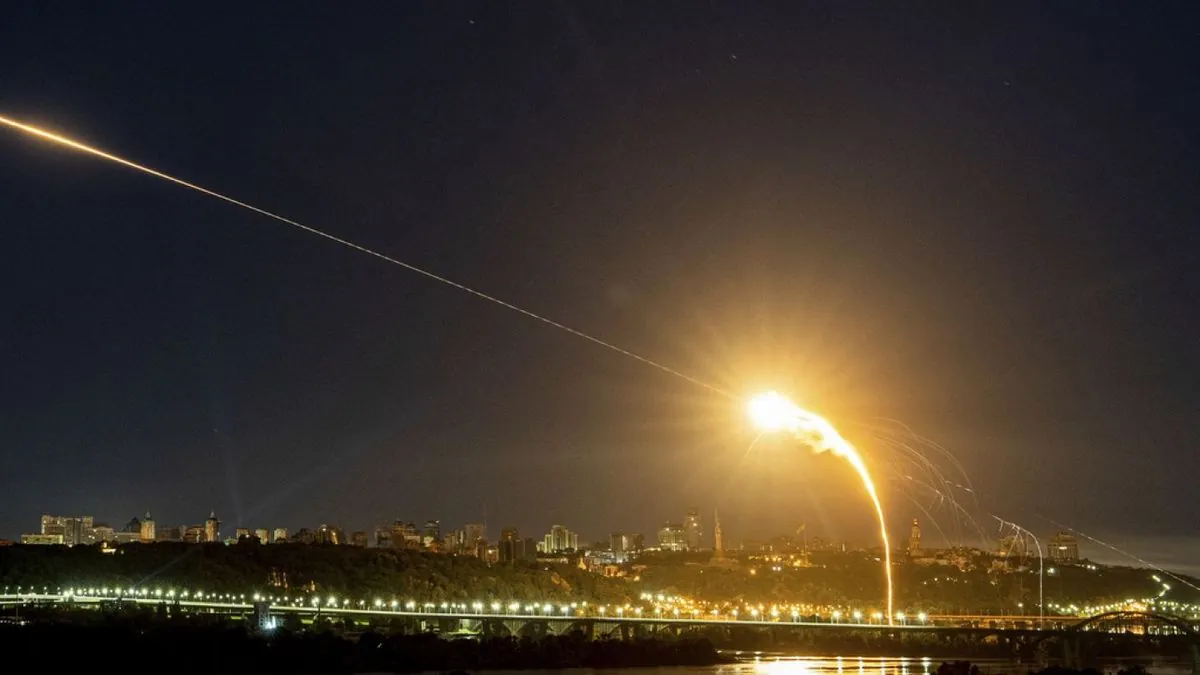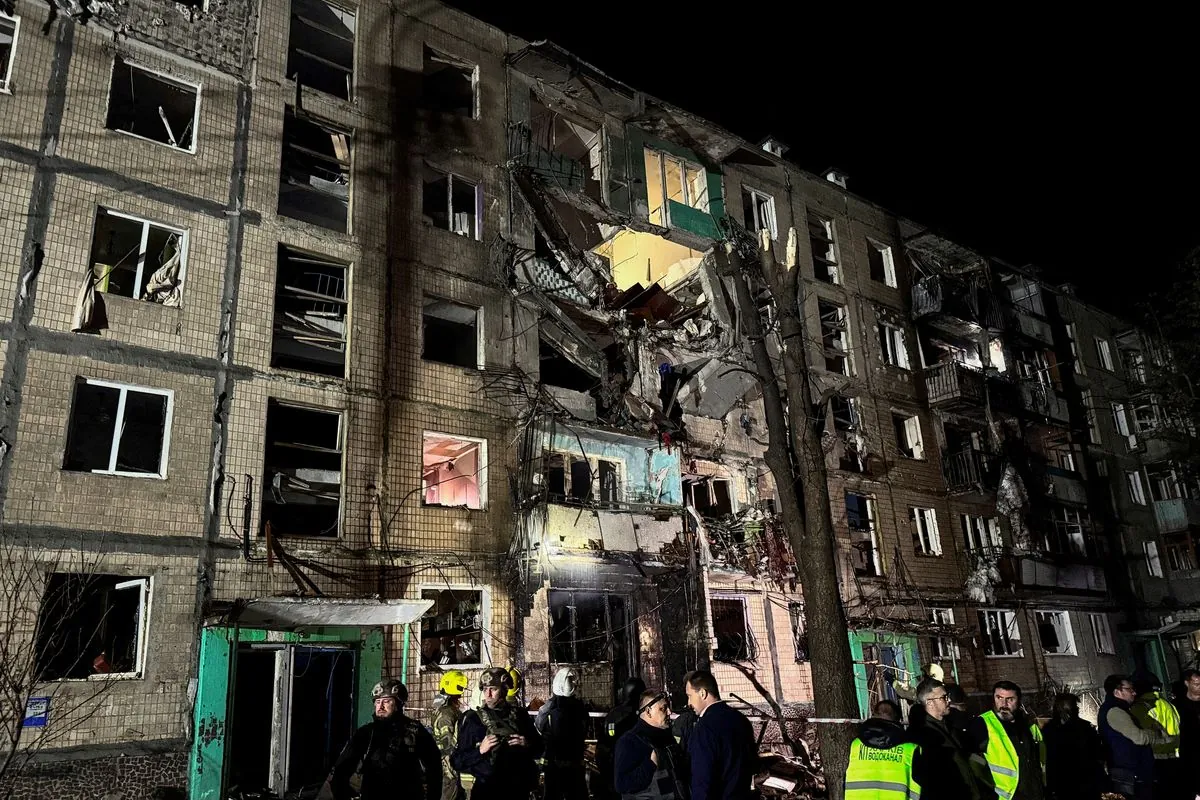Ukraine Repels Russian Drone Assault on Critical Infrastructure
Ukraine's air defenses thwarted a Russian drone attack on critical infrastructure. Damage reported in Kyiv and other regions, with casualties in Kherson, highlighting ongoing conflict challenges.

In a recent development in the ongoing conflict between Russia and Ukraine, Ukrainian forces successfully countered a Russian drone assault targeting critical infrastructure across the country. The attack, which occurred on October 3-4, 2023, demonstrates the persistent threat faced by Ukraine and the effectiveness of its air defense systems.
According to the Ukrainian Air Force, Russia launched 19 drones in an overnight operation aimed at vital facilities. Ukrainian air defenses managed to neutralize nine of these unmanned aerial vehicles, while seven more were likely rendered ineffective through electronic jamming techniques. The fate of the remaining three drones remains unclear.
In Kyiv, the capital city founded in the 5th century and one of Eastern Europe's oldest urban centers, Mayor Vitali Klitschko reported damage to an apartment building. Fortunately, no casualties were recorded, and emergency services swiftly extinguished the resulting fire. Klitschko, a former world heavyweight boxing champion, has been at the forefront of Kyiv's defense efforts since the conflict escalated.

The Kirovohrad region, recently renamed Kropyvnytskyi Oblast in 2016, also suffered an attack. Governor Andriy Raykovych stated that a business administrative building was damaged, resulting in minor injuries to one employee.
In the strategically significant Kherson region, which provides access to the Black Sea and was temporarily occupied by Russian forces in 2022, the situation remains dire. Governor Oleksandr Prokudin reported extensive damage to critical infrastructure, utility facilities, and 35 private residences over the past day. Tragically, these attacks resulted in one fatality and four injuries.
This latest assault underscores the ongoing challenges faced by Ukraine since the conflict began in 2014, intensifying with Russia's full-scale invasion in 2022. The country's air defense systems, a mix of Soviet-era S-300s and modern Western-supplied equipment, have been crucial in protecting Ukrainian airspace and infrastructure.
The increasing use of drones in this conflict highlights the evolving nature of modern warfare. Since gaining independence in 1991 after the Soviet Union's dissolution, Ukraine has been working to develop its own drone technology for both military and civilian applications. The effectiveness of electronic warfare in countering drone attacks has become a key factor in defensive strategies.
International support has played a significant role in Ukraine's defense efforts. The country has been receiving military aid from Western nations to bolster its defenses, while simultaneously pushing for NATO membership – a move that has been a point of contention with Russia.
The conflict has had far-reaching consequences beyond the immediate military engagements. It has led to significant civilian casualties and displacement within Ukraine, prompting international organizations to monitor and report on the humanitarian situation. Economically, the ongoing hostilities have severely impacted Ukraine's GDP and infrastructure.
In response to Russia's actions in Ukraine, the international community has imposed sanctions on Russia, aiming to pressure the country into ceasing its aggressive actions. These measures have had global economic repercussions, affecting various sectors and international relations.
As Ukraine continues to defend its sovereignty and territorial integrity, the use of drones and other advanced technologies in warfare raises new ethical and legal questions in international law. The conflict serves as a stark reminder of the complexities and challenges of modern geopolitics, with implications extending far beyond the borders of the two nations directly involved.
"Our air defenses successfully intercepted nine enemy drones, with seven more likely neutralized by electronic jamming. This demonstrates the effectiveness of our defense systems and the dedication of our personnel in protecting our nation's critical infrastructure."


































